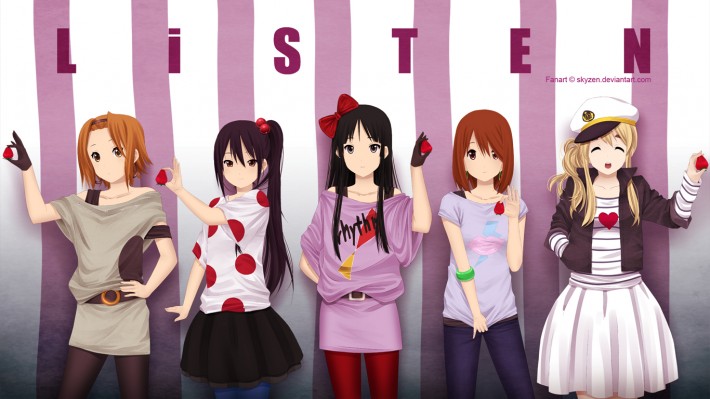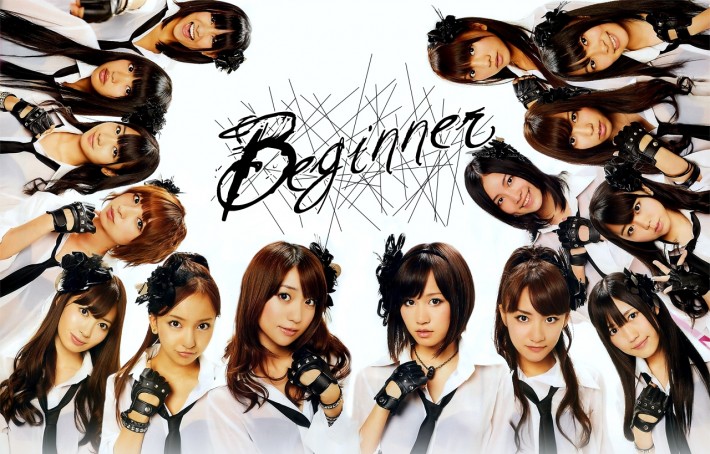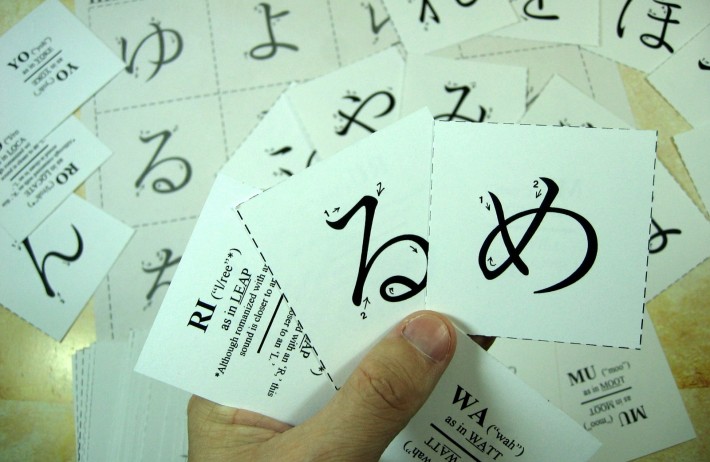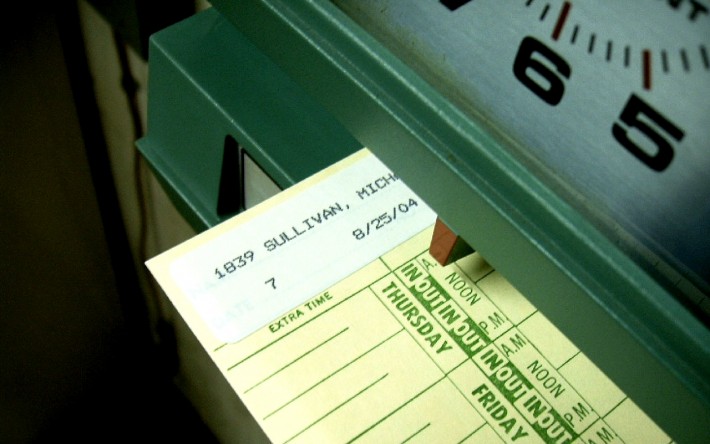There are many different things you can do to help with learning Japanese that really aren’t all that difficult and require little to no effort on your part. Maybe you’ve heard of some of them. Maybe you’re even doing some of them already but you just don’t know how they’re helping you. Of course active learning is always beneficial to your studies, but doing nothing but active study can get boring and monotonous after a while. That being said, let’s learn more about all the wonderful things passive (i.e. not much effort required) learning can do for you.
What is Passive Learning

When it comes to Japanese, passive learning (or at least the kind I’ll be talking about here) most often comes from listening to and consuming Japanese audio-visual media. The passive bit is that you’re not actively doing anything other than just listening to the Japanese language. You’re not taking any notes, you’re not stopping the video/audio/game to review what you heard or anything – you’re just listening to it and taking in the language as it is.

This can be done both with and without English subtitles, depending on your current level of Japanese ability, but I’d say that the more Japanese you already know, the more you’ll get out of passive learning in this sense. It’s all about consuming Japanese media and not worrying over vocabulary or anything yucky like that. Sounds great, doesn’t it?
For more about passive learning (and Japanese), you can check out this article and this article from TIME.
How Passive Learning Helps the Beginner

But how can passive learning benefit you if you don’t know any Japanese at all? Even before you’ve started learning the Japanese language, there are lots of easy things you can do to help you for the future. Just hearing Japanese being used gets you more comfortable with the language. Even if you don’t know what they’re saying, hearing the language over and over causes it to become less strange to you. The more you hear it, the less foreign sounding it is to your ears.
Maybe you’ll hear someone out in public and you’ll be able to realize they’re speaking Japanese (even though you might not be sure exactly what they’re saying). It might not seem like that big of a deal, but it’s definitely one of the first steps in learning the language. You just have to get comfortable with how it sounds. You gotta get used to it.

One of the biggest advantages to listening to lots of Japanese before you actually learn how to speak it is getting nice and familiar with how Japanese should sound. You get a much better handle for pronunciation, accent, and tone than if you just went into it without any prior listening experience. Whether you realize it or not, your brain is subconsciously paying attention to how Japanese sounds. This makes it much easier for you to reproduce these sounds correctly when the time comes. Well, usually at least.
This really helps out, especially by keeping you from getting into any bad pronunciation habits. If you already know how it should sound, you’ll be much less likely to get used to pronouncing things incorrectly or ingraining your personal Japanese with a bad accent because you and your brain already know what a proper accent should sound like. This is a good thing.
Before I started actually learning Japanese at college, I listened to a lot of movies, anime, and music, and I’m very confident that all this passive listening really helped me out a lot with my pronunciation and accent once I started to learn and speak the language. It might not work for everyone like this, but it sure helped me.
The Tools of Passive Learning

So what’s the best way to do this passive learning? What are the best materials to make use of? Well there are tons. We have anime, dramas, movies, music, podcasts, games, and even audio books. Do you have a favorite Japanese show or movie? Watch it in Japanese with the subtitles turned off.
You’ll still be able to follow along with it since you know the story already, and your brain might even start to pick up on some common words and phrases just by watching and listening. Or, you might learn some words you heard in the show at a later date and you’ll remember when you heard them in the show which will help you to retain that information.
This also goes for video games that have a Japanese audio option. If it has that option, you should always make good use of it. It might not be as effective as shows and movies since you’ll still have to read along with that pesky English dialogue, (unless of course you can understand without it, in which case, well done) but listening to the Japanese audio is way better than listening to the English audio. Some Japanese is always better than none at all, I say.

But what about when you’re on the go? Maybe you don’t have time to sit down and play a game or watch a show. Maybe you’re in your car, on the subway, or going for a run or a bike ride. This is the perfect opportunity to make use of audio only media like podcasts, music, and audio books. For those interested, Koichi did a post about Japanese podcasts and how to make good use of them which you can check out here.
Listening to music is also good for pronunciation if you find yourself singing along with the words, even if you don’t know what they mean. Of course, it also helps out a lot if you can make out the words they’re singing. Listening to Fear, and Loathing in Las Vegas, for example, isn’t going to help you out much.

Audio books are another option I think most people forget about. Do you love Harry Potter? Get it on audio book. In Japanese. Even if you don’t know much Japanese, you’ll still be able to pick out the words you do know like Hogwarts, Dumbledore, and Voldemort. Plus you’ll be hearing them like how they’d be said in Japanese which also helps with your pronunciation, especially loan words and other things written in katakana.
Believe me, it’s more useful than you’d think. Listen to bits and pieces on your daily commute. It’ll be much more useful than top 40 tunes, I assure you. Plus it’s much less stressful than trying to follow along with some audio language lesson while you’re dealing with rush hour traffic or something. With these materials you just sit back and listen.
Best When Paired With Active Learning

Unfortunately, passive learning alone won’t get you very far. The only times I’d really recommend passive learning by itself is if you’re a complete beginner, or starting to near that elusive master level. When you’re a complete beginner, passive learning helps a lot with getting comfortable with the sounds of the language and hearing proper pronunciation and accent like I mentioned above. Then once you’re comfortable with how the language sounds, you can actually start to learn and pronounce it with confidence.
And then when you’re nearing master level, you can get away with passive learning because you already know so much of the language already. Most of the new stuff you’re just picking up in your head and making new associations that way. Your brain is automatically doing most of the work for you. Maybe every once in a while you’ll hear a new word that you need to write down and look up later, but most of the time you’ll probably be picking up things through context and intuition.

It’s really during the middle part (and it’s a very big middle, by the way) that you’ll be best off pairing your passive learning with some good old fashioned active learning. This is also the period of learning that requires the most work on your part. Some of the best ways to do this are to pick out one of your favorite shows, like a drama or an anime, and then make an Anki flashcard deck (or find one somebody else made) with all the vocabulary from the show that you want to learn or focus on.
Once you have these cards, you can actively study them, and break up your active studies by passively watching the show and hearing your hard work pay off through the words and phrases you recognize. This also reinforces your learning experience, and makes the words and phrases easier to remember since they’re linked with the show in your brain, with both the audio and the visual aspects. For more information on this, you can check out the post by Koichi that explains how to study with Japanese dramas.
Results May Vary

Okay, you got me. So you really can’t learn Japanese without doing anything, but it is true that there are a handful of easy things that can be done with little to no extra effort that are certainly helpful. Most of them help more when you include some active learning along with them, but it’s always nice to break up your active studies with some passive ones (passive ones are a lot less stressful and more fun anyway).
There’s lots of conversation online in forums and such about the potential benefits and the pros and cons of the passive approach to learning languages like this, but I think all would agree that it certainly doesn’t hurt, and some people will get more out of it than others.

One thing that is true, though, is that the more hours you put into Japanese, the more you’ll get out of it. Even if you aren’t actively studying, and you feel bad about slacking on your studies because of how much anime you’re watching, don’t beat yourself up too much. Watching anime is helping your Japanese a lot more than doing something that doesn’t involve Japanese at all (like basket weaving).
But don’t let passive learning become all that you do either. It’s nice to break up your active studies with passive Japanese exposure, but don’t let it become your only means of study. You don’t want to get yourself into a slump. If you’re at the intermediate level and feel like you’re getting into a slump or losing motivation, check out my other post on How To Conquer the Intermediate Plateau of Japanese. Maybe it can help you out.

I don’t believe that passive learning alone will learn you a language, but like I said, it’s a great way to break up chunks of active study, it’s easy to do, and it’s fun. Having fun while you learn is one of the most important things you can do. Plus, some Japanese is better than no Japanese at all. So get out there and watch an anime or something!
So tell me, what are your thoughts on passive learning and its relationship with active learning? Have you ever had any instances where you realized how much (or how little) passive learning was helping you with your Japanese studies? Share your story in the comments!
